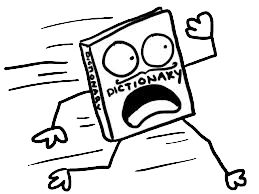
Run Stride Analysis
Run Right is an exciting and innovative concept in run training developed exclusively by the expert physical therapy staff at Premier Physical Therapy in Omaha, NE. It is a multidimensional approach designed to help new and experienced runners with their running form. Not only are we physical therapists, but we are also experienced runners. We understand from personal experience the importance of good form and the right shoe. Our goal is to help you to become a better, stronger, and faster runner. Good technique is essential in performing to your maximum potential while limiting the risk of injury.
What is Run Right?
We use specified physical screens and slow-motion videos to analyze your running style and form frame-by-frame. We can use this information to identify a source of pain or for injury prevention. Then, we develop an individualized rehab program to meet your goals. Whether that is reducing pain, improving mechanics, or increasing speed and performance. Running analysis is also important when buying shoes. The style of shoe you wear can have a great effect on your running mechanics or injury risk, and we can make sure you’re in the right shoe.
Who Does Run Right Benefit?
- Beginning runners
- Return to running from injury
- Training for marathon, 1/2 marathon, 10k, 5k
- Runners experiencing back, hip, knee, or ankle pain
- Decreased performance due to early fatigue or pain
- Buying new running shoes or checking the best fit
- Orthotics
- We work closely with shoe companies that provide personalized shoe/foot analysis
Contact us to learn more about whether or not you would be a good candidate for a run stride analysis.

Common Running Terms & Definitions Used in a Run Stride Analysis
Heel Strike
Describes a common running form where the heel makes initial contact with the surface. Normally this is the outside edge of the heel, this is why so many runners have a wear pattern on the outside edge of their heels. Associated with increased risk of anterior knee pain.
Forefoot Strike
Describes initial contact being made at the forefoot instead of the heel. The heel then slowly drops close to the ground before rebounding into push-off. Also called “natural” running, because this is how you would run without shoes on. That being said, most of us have run with shoes since a young age, and trying to change mechanics suddenly can lead to achilles tendinitis and plantar fasciitis.
Loading Response
Describes the period of time from Initial Contact to when the foot is flat on the ground (for heel striker). For a forefoot striker, this describes to the point of maximum heel drop as your stance leg accepts full weight-bearing
Pronation
The motion of the foot as it rolls inward, or as the inside arch of your foot comes down (opposite of supination). The normal process of running, after your foot makes contact with the ground, can become a problem for people who overpronate, underpronate, or pronate to quickly.
Supination
The motion of the foot in which it rolls outward or the inside arch raises up, opposite of pronation. Normal running mechanics start in a supinated position, then pronate, then return to a supinated position from midstance moving forward
Stance Phase
Period of time when the foot is in contact with the ground. There is a period of time where both feet are in stance phase, but during the other portion the other leg will be in Swing Phase.
Contact Time
Contact time refers to the duration your foot remains in contact with the ground during each stride. Analyzing contact time helps us evaluate the efficiency of your running gait and identify potential issues such as excessive braking forces or inadequate propulsion.
Running Gait Cycle
The running gait cycle represents a complete sequence of events from initial contact of one foot to the subsequent contact of the same foot. Analyzing the different phases of the running gait cycle allows us to assess the timing, coordination, and symmetry of your running mechanics.

